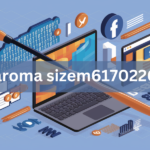Many traditional security architectures must provide adequate protection in an increasingly prevalent and sophisticated cyber threat age. As businesses across the globe face mounting pressure to safeguard their data and systems, the Zero Trust network security model has emerged as a paradigm-shifting approach. Distinct from conventional methods primarily focusing on perimeter defenses, Zero Trust mandates continuous verification of all users and devices attempting to access resources. This strategic shift is vital for any organization aiming to navigate the complexities of today’s digital environment effectively.
The Zero Trust model does not accept any assumptions about Trust, which represents a stark departure from older security strategies predicated on defending established perimeters. This philosophy emphasizes a continuous assessment of risks, ensuring that every access request is scrutinized, regardless of whether the actor is inside or outside the firewall. This approach becomes particularly relevant with the increasing complexity of cyber ecosystems and work-from-anywhere norms.
The Need for a New Cybersecurity Model
Over the past decade, the number of cyber incidents impacting organizations of all sizes has significantly risen. Traditional cybersecurity frameworks primarily rely on securing the network perimeter and have struggled to keep pace with these evolving threats. One critical limitation of these older systems is their focus on defending against external threats while assuming that internal environments are safe. However, with attackers increasingly able to bypass initial defenses, this assumption is no longer valid.
According to industry reports, more than 60% of data breaches involve using stolen credentials, highlighting the vulnerabilities of perimeter-focused security mechanisms. Cybersecurity experts advocate for more adaptive and resilient approaches like Zero Trust in light of these challenges. This new model emphasizes the continuous validation of all access attempts, ensuring that only authenticated users can have controlled access to applications and data. Review this recent report on cybersecurity trends for more information on why such shifts are essential.
Fundamental Principles of Zero Trust
Zero Trust’s core is that users and devices must repeatedly and consistently earn Trust. Unlike legacy systems that implicitly trust users inside the network, Zero Trust maintains that no user or device should be trusted automatically. By endorsing the mantra “never trust, always verify,” the Zero Trust model reinforces multiple layers of security checks.
This approach involves implementing stringent access control measures, such as multi-factor authentication (MFA) and identity management systems, to validate each request. It also requires continuous monitoring of network traffic and user activity through advanced data analytics. In doing so, the model allows organizations to identify and mitigate threats quickly, improving their overall security posture.
Implementation Challenges of Zero Trust
Transitioning to a zero-trust model can be challenging, particularly for organizations entrenched in traditional security practices. One major hurdle is the resource-intensive nature of implementing Zero Trust. Companies must invest extensively in new technologies and workforce training programs to adopt this model successfully. Additionally, existing infrastructure might require significant modifications to align with Zero Trust principles effectively.
Overcoming these implementation challenges necessitates carefully assessing security processes and a strategic plan aligning with organizational goals. While this can be daunting, the long-term benefits of enhanced security and risk management often justify the initial expenditure and effort.
The Role of Technology in Zero Trust
Technology is fundamentally transforming how Zero Trust is executed and maintained. Modern advancements such as artificial intelligence (AI) and machine learning (ML) are integral to the Zero Trust framework. These technologies offer AI-enhanced threat detection capabilities, automating the identification of suspicious behavior patterns and reducing reliance on manual intervention. AI and ML are crucial in refining authentication processes, improving anomaly detection, and enhancing overall threat intelligence. These technologies can quickly identify potential risks and adapt access controls in real time by continuously analyzing vast amounts of data. As the volume and complexity of cyber threats continue to grow, AI and ML enable a more dynamic and responsive Zero Trust environment. This strengthens security and enhances operational efficiency by reducing false positives and enabling faster, more accurate decision-making.
Future Prospects for Zero Trust
As global digital transformation accelerates, Zero Trust is poised to become a cornerstone of the future cybersecurity landscape. Adoption rates are expected to rise as organizations recognize that traditional perimeter defenses are insufficient for countering modern threats. The shift towards Zero Trust is a necessary evolution of security protocols and a strategic priority for businesses looking to protect their digital assets robustly.
Moreover, developing more advanced tools and technologies will enhance its effectiveness as Zero Trust gains traction. Concurrently, governments and regulatory bodies worldwide are expected to support the transition by updating policies and frameworks that encourage more comprehensive security practices across industries.
Conclusion
The Zero Trust model signifies a transformative change in cybersecurity ideology, emphasizing continuous verification and minimal trust assumptions. Implementing a zero-trust strategy ensures organizations can better protect their vital resources as cyber threats evolve. Embracing this model helps nurture a security-focused culture, leveraging technological advancements for a resilient and secure future. By limiting access based on strict identity verification and context, Zero Trust minimizes the risk of insider threats and lateral movement across networks. It shifts the focus from perimeter-based defenses to a more granular, resource-centric approach, enhancing protection for remote and hybrid work environments. Zero Trust also promotes regular monitoring and micro-segmentation, ensuring access controls are adaptive and responsive to changing risk levels. Adopting Zero Trust strengthens an organization’s ability to detect, respond to, and mitigate threats in real-time, supporting a proactive stance in cybersecurity.
Stay informed with the news and updates on LET MAGAZINE Best Regards!



